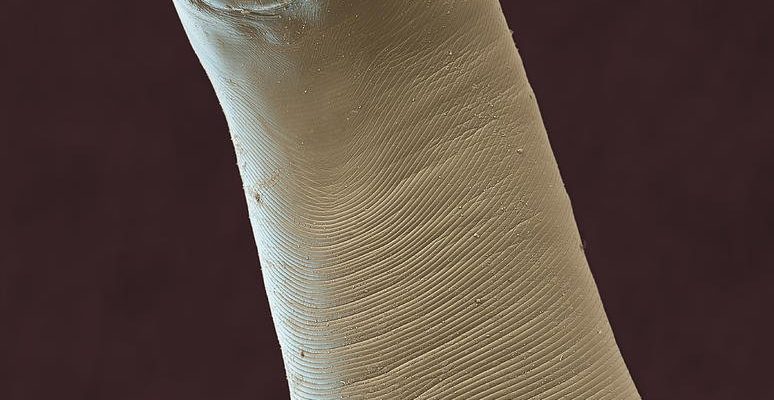
Hookworms thrive in specific conditions, much like how some people love the sunny beach while others prefer a chilly mountain. The changes in temperature and moisture levels throughout the year influence their lifecycle and activity. With advancements in technology, like using remote devices that can track environmental conditions, we can gain valuable insights into when hookworm activity peaks. This not only helps in managing health risks but also fosters more awareness about this issue.
The Lifecycle of Hookworms
Understanding the lifecycle of hookworms is essential for monitoring their activity effectively. It all starts when hookworm eggs are expelled in the feces of an infected host. Once these eggs land in warm, moist soil, they hatch into larvae. This is where the trouble begins. You might be wondering how these tiny creatures manage to survive in different seasons.
The larvae can take up to a week to develop, depending on environmental conditions. In warm and humid climates, they can thrive rapidly, while colder conditions can significantly delay their development. The larvae then infect hosts by penetrating through the skin, often through bare feet. This is why it’s essential to monitor outdoor areas, particularly in warm months, to prevent contact with potentially contaminated soil.
Seasonal Patterns in Hookworm Activity
Hookworm activity varies significantly across the seasons, largely due to environmental factors. In warmer months, especially from late spring through summer, hookworm larvae flourish. The combination of heat and moisture creates a perfect breeding ground for them. Conversely, as temperatures drop in fall and winter, their activity diminishes, making these colder months a more favorable time for prevention efforts.
During summer, many families enjoy outdoor activities; it’s crucial to be aware of hookworm presence. You might see kids playing barefoot in the grass, which can increase the risk of infection. This season demands heightened awareness and preventive measures, like wearing shoes outdoors, especially in known endemic regions.
Factors that Influence Hookworm Activity
Several factors influence hookworm activity beyond just temperature. Soil moisture, humidity, and even rainfall are critical elements. For example, a prolonged rainy spell can increase soil moisture levels, creating optimal conditions for larvae survival and development. It’s a bit like watering a garden; too much water can create a swamp, just as too little can dry it out completely.
You might also want to consider human activity. Areas with higher foot traffic, particularly in urban centers or agricultural fields, can increase the likelihood of hookworm infections. Proper sanitation practices, like proper disposal of human waste, play a crucial role in minimizing their spread. If communities work together to monitor and manage these conditions, protecting everyone becomes easier.
Tools for Monitoring Hookworm Activity
So, how do we keep tabs on these elusive parasites? Modern technology has made it easier than ever. By using tools like remote sensors to track weather conditions, we can predict when hookworm activity might spike. Think of it as setting up a weather station for health. These devices can monitor soil temperature and moisture levels, allowing us to anticipate when conditions become favorable for hookworm larvae.
In addition to technology, traditional methods like soil sampling can provide valuable data too. By collecting and analyzing samples from various locations, researchers can determine the presence of hookworm larvae. It’s a bit like detective work, piecing together clues to understand the bigger picture.
Preventing Hookworm Infections
Prevention is always better than cure, especially when it comes to hookworms. Understanding the seasonal patterns can help us protect ourselves and our loved ones. During peak activity periods, wearing shoes outdoors becomes essential. Encourage kids to play in sandboxes or grassy areas while ensuring they have footwear on.
Regularly deworming pets, especially in areas with high hookworm prevalence, is crucial too. Pets can be carriers, and keeping them healthy means protecting yourself. Awareness campaigns in schools and communities can also help spread the word about prevention methods, creating a collective effort.
Community Involvement and Education
Community involvement is vital in the fight against hookworm infections. Education plays a large role; the more people know about hookworm activity and prevention methods, the better we can manage the risks. Schools, healthcare providers, and local governments can collaborate to provide resources and workshops that educate the public.
You can set up community clean-up events to ensure that areas are free of contamination. This not only helps reduce hookworm risks but also fosters a sense of community. Think about it—when people come together, they can create healthier environments for everyone.
The Future of Hookworm Monitoring
As we move forward, the future of hookworm monitoring looks promising. Innovations in technology will continue to provide new insights. Remote monitoring, data collection, and environmental modeling will help us understand how hookworm activity changes over time. This is crucial for developing effective public health strategies.
It’s also important to consider climate change. As weather patterns shift, hookworm activity could change too. Staying informed about these trends will be essential for communities, especially those in high-risk areas, to adapt and respond effectively.
In conclusion, monitoring hookworm activity across the seasons is not just about tracking a pesky parasite. It’s about safeguarding health, ensuring safer environments, and fostering community awareness. By understanding their lifecycle and seasonal patterns, we can take proactive steps, making our world healthier for everyone.

